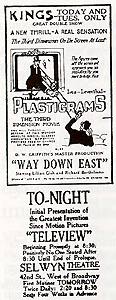The History of Stereo Photography
Early context
In 280 A.D.,
Early stereo photography
Queen
|
|
The taking and viewing of stereo photographs was a popular pass time in the nineteenth century. |
It was Sir Charles Wheatstone who in 1833 first came up with the idea of presenting slightly different images to the two eyes using a device he called a reflecting mirror stereoscope. When viewed stereoscopically, he showed that the two images are combined in the brain to produce 3-D depth perception. The invention of the Brewster Stereoscope by the Scottish scientist Sir David Brewster in 1849 provided a template for all later stereoscopes. This in turn stimulated the mass production of stereo photography which flourished alongside mono-photography. Stereo photography peaked around the turn of the century and went out of fashion as movies increased in popularity. In 1939 William Gruber saw a way to make use of the newly invented flexible 35mm film by Kodak and teamed up with Harold Graves to form the View-Master company. These toys first became available during the 1940's and are still available today.
|
Wheatstone was the first to demonstrate stereopsis using a crude stereo viewing device. |
Sir Charles Wheatstone, 1802-1875 - he also invented the concertina! |
Here are some early stereoscope viewers courtesy of Bert
|
|
|
|
|
|
 The
discovery of anaglypic 3-D appeared in the 1850's as the result of experiments
by the Frenchman Joseph D'Almeida. Color separation took place using red/green
or red/green filters and early anaglyphs were displayed using glass stereo
lantern slides.William Friese-Green created the first 3-D anaglypic motion
pictures in 1889 which first went on show to the public in 1893. These
anaglypic films designated as plasticons or plastigrams
enjoyed great success during the 1920's. The films used a single film with the
green image emulsion on one side of the film and the red image emulsion on the
other. In 1922, an interactive plasticon opened at the Rivoli Theater in
The
discovery of anaglypic 3-D appeared in the 1850's as the result of experiments
by the Frenchman Joseph D'Almeida. Color separation took place using red/green
or red/green filters and early anaglyphs were displayed using glass stereo
lantern slides.William Friese-Green created the first 3-D anaglypic motion
pictures in 1889 which first went on show to the public in 1893. These
anaglypic films designated as plasticons or plastigrams
enjoyed great success during the 1920's. The films used a single film with the
green image emulsion on one side of the film and the red image emulsion on the
other. In 1922, an interactive plasticon opened at the Rivoli Theater in
|
Three dimensional movies called plastigrams were a common form of entertainment during the 1920's. |
View-Master became a popular toy for children from their introduction in 1939. |
In 1932, Edwin H Land patented a process for producing polarized filters that eventually led to the development of full color 3-D movies. This was possible because the left/right separation could be achieved using the polarizing filters rather than the color channel. Land also perfected a 3-D photographic process called vectography. During the second world war vectographic prints were used widely for military applications such as aerial photography.
* What are Stereo Images?
* Dates in Vision Science
* Cool Stereo Images
* Ways of making Stereo Images with Computers
* Technical Information about Stereophotography
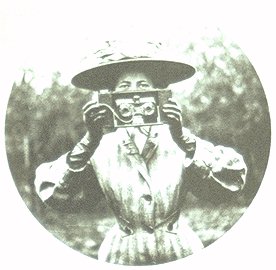

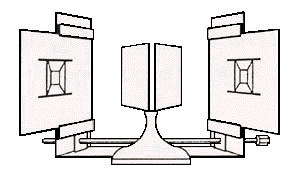
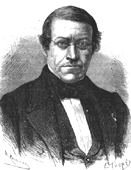
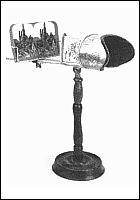
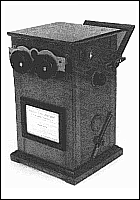 Plastoscope;
Dr. R. Krügener. Ca. 1899
Plastoscope;
Dr. R. Krügener. Ca. 1899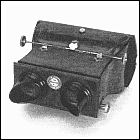 Brewster type stereoscope. Ca. 1860
Brewster type stereoscope. Ca. 1860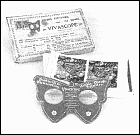 Vivascope;
Vivascope;
